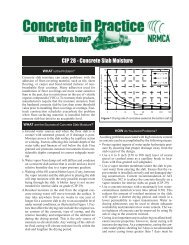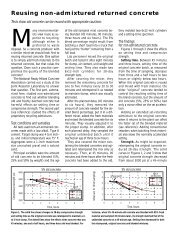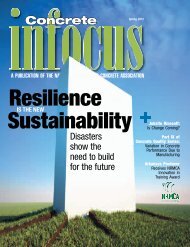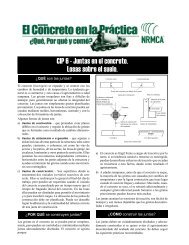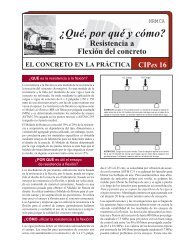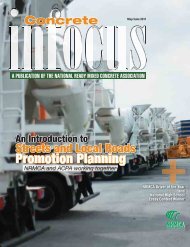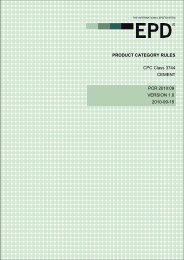Fall 2004 - National Ready Mixed Concrete Association
Fall 2004 - National Ready Mixed Concrete Association
Fall 2004 - National Ready Mixed Concrete Association
You also want an ePaper? Increase the reach of your titles
YUMPU automatically turns print PDFs into web optimized ePapers that Google loves.
tech talk<br />
Understanding<br />
the LEED Credit<br />
for Recycled Content<br />
By Lionel Lemay, PE, SE,<br />
Senior Director of Applied Engineering, NRMCA<br />
If you haven’t already supplied concrete for a LEED project, there is a<br />
good chance you will soon. LEED, which stands for Leadership in Energy<br />
and Environmental Design, is a rating system that is quickly becoming<br />
the standard for green building design and construction. It was<br />
developed through a consensus process by the United States Green Building<br />
Council (USGBC), a non-profit organization dedicated to promoting<br />
buildings that are environmentally responsible, profitable and healthy<br />
places to live and work.<br />
The LEED rating system is credit-based, allowing projects to earn<br />
points for environmentally friendly actions taken during the design and<br />
construction process. A project requires a minimum of 26 points to be<br />
LEED certified. There are advanced levels of certification, including silver,<br />
gold, and platinum, requiring a minimum of 33, 39 and 52 points, respectively.<br />
There are five core credit categories to obtain LEED points: Sustainable<br />
Sites worth up to 14 points, Water Efficiency worth up to 5 points,<br />
Energy and Atmosphere worth up to 17 points, Materials and Resources<br />
worth up to 13 points, and Indoor Environmental Quality worth up to 15<br />
points. There is a sixth category called Innovation and Design Process for<br />
an additional 5 points. There are a total of 69 LEED points available.<br />
The LEED point system is not defined in terms of materials or specific<br />
systems but describes credits in general terms. <strong>Concrete</strong> can play a significant<br />
role in obtaining LEED points in every credit category. For example,<br />
Photo credit: Jim Schafer Location<br />
Photography<br />
30 ı FALL <strong>2004</strong>



